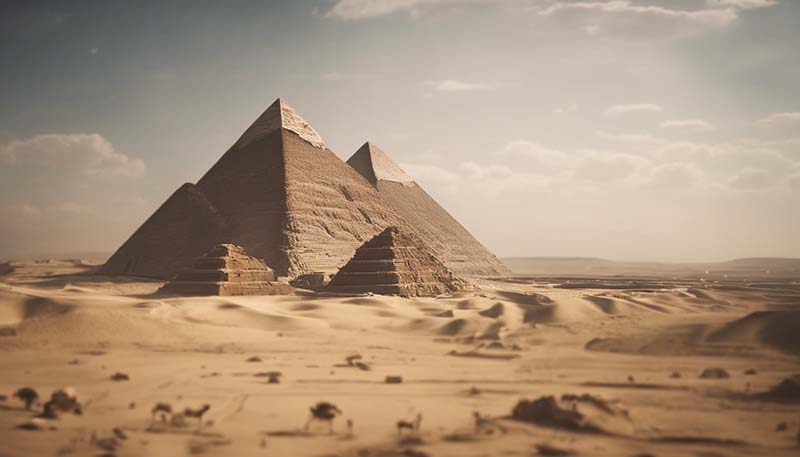Exploring the Mysteries of Ancient Egypt
Egypt,the land of the Pharaohs,has long captivated the imagination of historians,archaeologists,and the general public alike.Its monumental pyramids,enigmatic Sphinx,and the treasures of Tutankhamun are just the tip of the iceberg when it comes to the mysteries that still linger from this ancient civilization.
Introduction to Ancient Egypt
Ancient Egypt,one of the world's first civilizations,flourished along the Nile River from around 3100 BC to 30 BC.It is renowned for its cultural achievements,monumental architecture,and unique religious beliefs that have left an indelible mark on history.
The Pyramids of Giza
The most iconic structures of Ancient Egypt are the Great Pyramids of Giza,built as tombs for the pharaohs.The largest,the Great Pyramid,also known as the Pyramid of Khufu or Cheops,is the only remaining of the Seven Wonders of the Ancient World.
How Were They Built?
The construction methods used to build the pyramids remain a topic of debate.Some theories suggest ramps were used,while others argue for levers,counterweights,or a combination of these and other techniques.The precision in the alignment of the pyramids to the cardinal points and the astronomical bodies adds to the mystery.
The Sphinx
The Great Sphinx of Giza,with the body of a lion and the head of a human,is another enigma.The debate over its age continues; some believe it dates back to the reign of Pharaoh Khafre,while others argue it is much older.
Purpose and Significance
The Sphinx's true purpose is also a mystery.It is often thought to be a guardian figure,but its original function and the meaning behind its unique design are still subjects of speculation.
The Pharaohs and the Afterlife
Pharaohs were considered to be gods on earth,and their deaths were meticulously prepared for.The concept of the afterlife was central to Ancient Egyptian religion,and the preservation of the body through mummification was seen as crucial for the soul's journey.
Mummification Process
The process of mummification involved removing the internal organs,treating the body with natron (a type of salt) to dry it out,and wrapping it in linen bandages.The techniques evolved over time,with the most intricate methods used for royal mummies.
Hieroglyphs and the Rosetta Stone
The Ancient Egyptians used a system of hieroglyphs to write their language.The Rosetta Stone,discovered in 1799,was the key to deciphering hieroglyphs.It presented the same text in three scripts: hieroglyphic,Demotic,and ancient Greek,allowing scholars to unlock the secrets of the hieroglyphic script.
Decipherment and Impact
The decipherment of hieroglyphs by Jean-François Champollion in 1822 opened the door to a deeper understanding of Ancient Egyptian history,culture,and religion.
Treasures of Tutankhamun
The discovery of Tutankhamun's tomb by Howard Carter in 1922 was a landmark event in archaeology.The tomb's intact treasures provided unprecedented insights into the life and death of a young pharaoh,as well as the burial practices of the time.
Curse of the Pharaohs
Tales of a curse associated with the tomb of Tutankhamun have fueled public imagination.Some of the people involved in the excavation fell ill or died under mysterious circumstances,though no concrete evidence supports the existence of a curse.
Conclusion
Ancient Egypt's mysteries continue to intrigue and inspire. From the monumental achievements of its architecture to the depths of its religious beliefs and practices,there is still much to learn from this ancient civilization.As archaeological and technological advancements continue,we can look forward to unlocking more of the secrets that Ancient Egypt holds.
From the monumental achievements of its architecture to the depths of its religious beliefs and practices,there is still much to learn from this ancient civilization.As archaeological and technological advancements continue,we can look forward to unlocking more of the secrets that Ancient Egypt holds.
For further reading and research,consider exploring the following resources:
- Encyclopædia Britannica - Egypt
- Smithsonian Magazine - Articles on Ancient Egypt
- National Geographic - Ancient Egypt
Note: The image used in this article is for illustrative purposes and may not be an actual representation of the ancient structures or artifacts mentioned.
Comment